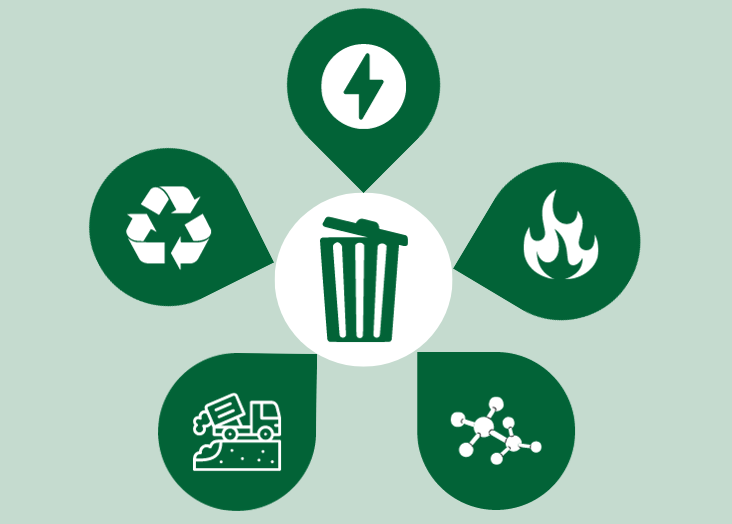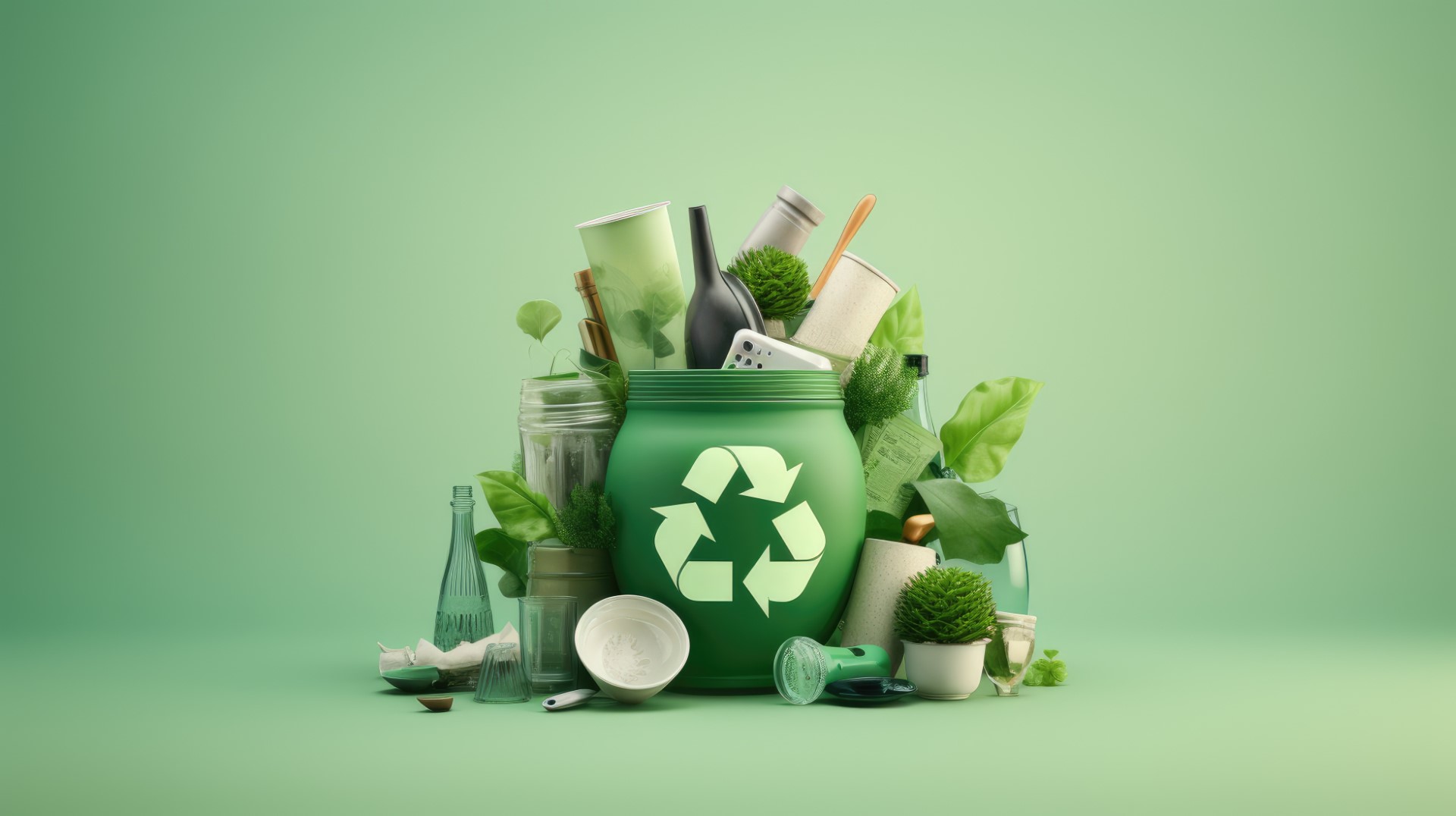The Influence of Recycling Lives Services on Communities and the Setting
The Influence of Recycling Lives Services on Communities and the Setting
Blog Article
Recognizing the Category and Handling of Different Kinds of Waste
Effective waste management is critical for environmental sustainability, needing an extensive understanding of the category and handling of numerous waste types. House waste, industrial byproducts, hazardous materials, electronic refuse, and natural remnants each demand distinctive procedures to guarantee safety and security and lessen eco-friendly damages.

Household Waste
House waste, including a broad range of discarded products generated from daily living activities, stands for a significant part of the overall waste stream - recycling lives services. This classification includes natural waste such as food scraps, backyard cuttings, and paper products, together with not natural materials like plastics, steels, and glass. The diverse nature of household waste requires effective category and management to mitigate environmental influence and promote lasting living practices
Effective house waste administration starts with partition at the source, facilitating recycling, composting, and risk-free disposal. Organic waste, for circumstances, can be composted to create nutrient-rich soil amendments, reducing garbage dump concern and boosting soil health and wellness. Recyclable products, including paper, glass, and certain plastics, can be refined and repurposed, minimizing and conserving resources power consumption connected with new product manufacturing.
Moreover, unsafe family waste such as batteries, digital devices, and cleansing chemicals requires specialized taking care of to stop soil and water contamination. Public understanding projects and convenient disposal options play crucial duties in ensuring proper disposal and recycling of these products. By executing durable waste reduction methods and promoting neighborhood participation, communities can substantially minimize the environmental footprint of family waste.
Industrial Waste
Industrial waste, a significant contributor to worldwide waste generation, encompasses a diverse variety of products produced by production, building, and various other commercial activities. Effective administration of commercial waste is vital for lessening environmental effect and advertising lasting techniques.
The handling of industrial waste normally includes several processes: collection, treatment, segregation, and disposal. Collection systems are made to effectively collect waste materials from numerous resources within a commercial procedure.
Taking on approaches such as waste reduction, source healing, and recycling can considerably minimize the concern of industrial waste on the atmosphere, adding to even more sustainable commercial methods.
Hazardous Waste

Corrosive wastes can harm or destroy living tissues and materials. Combustible wastes can quickly spark, positioning fire hazards, while responsive wastes can create surges or release hazardous gases upon contact with various other materials.
Efficient contaminated materials monitoring includes numerous essential methods: identification blog and partition of unsafe materials, safe transport and storage, and appropriate treatment and disposal. Treatment techniques might include chemical incineration, stabilization, and neutralization. Regulatory conformity is essential, assisted by frameworks such as the Source Conservation and Healing Act (RCRA) in the United States, which guarantees risk-free and environmentally sound management of contaminated materials.
Electronic Waste
Digital waste, usually abbreviated as e-waste, stands for an expanding difficulty in waste monitoring as a result of the fast obsolescence of innovation. This category includes a broad variety of thrown out digital devices, including smart devices, computer systems, tvs, and house home appliances. The complexity of e-waste lies in its structure; these items consist of a mixture of useful products such as gold and copper, along with dangerous substances like cadmium, mercury, and lead.

Regulation and regulations, such as the European Union's Waste Electric and Digital Equipment (WEEE) Directive, purpose to promote responsible e-waste management. These plans mandate manufacturers to help with the collection and recycling of digital read this post here items, thereby decreasing the problem on garbage dumps and reducing ecological contamination.
Organic Waste
Organic waste, incorporating naturally degradable materials such as food scraps, yard trimmings, and farming deposits, comprises a considerable part of the metropolitan strong waste stream. This sort of waste is significant not only for its volume but also for its possible environmental effect otherwise managed correctly. Organic waste can disintegrate anaerobically in garbage dumps, producing methane, a potent greenhouse gas contributing to climate change.
Appropriate handling of natural waste includes several methods. Composting is a commonly embraced approach, changing natural products right into beneficial garden compost that can enrich dirt and assistance sustainable agriculture. This process additionally reduces the volume of waste sent out to landfills. Another strategy is anaerobic digestion, which breaks down organic matter in the absence of oxygen, producing biogas that can be made use of as a sustainable energy resource. Additionally, drawing away food waste from land fills with donation programs can alleviate food instability while minimizing waste.
Municipalities and businesses are significantly identifying the significance of natural waste administration. Carrying out detailed organic waste reusing programs not just mitigates environmental effects however likewise aligns with broader sustainability objectives, promoting a round economy where sources are continuously recycled and repurposed.
Final Thought
Effective waste management and environmental management demand a detailed understanding of the category and handling of numerous waste types. Home, industrial, harmful, digital, and natural waste each call for distinctive treatments for disposal, therapy, and partition. Appropriate management decreases ecological influence, conserves sources, and advertises sustainability. Carrying out appropriate approaches for every waste kind makes sure risk-free and liable waste administration techniques, ultimately contributing to the security of ecological communities and public wellness.
Effective waste monitoring is critical for environmental sustainability, requiring an extensive understanding of the classification and handling of different waste types.Family waste, encompassing a wide selection of disposed of materials created from everyday living tasks, represents a considerable component of the overall waste stream.Industrial waste, a major factor to global waste generation, incorporates a diverse variety of materials generated by production, building, and various other commercial activities (recycling lives services).Unsafe waste, an important concern in waste monitoring, consists of materials that pose significant risks to human health and wellness and the setting due to their toxic, harsh, flammable, or responsive buildings.Organic waste, encompassing biodegradable products such as food scraps, lawn trimmings, and agricultural deposits, makes up a substantial part of blog the municipal solid waste stream
Report this page